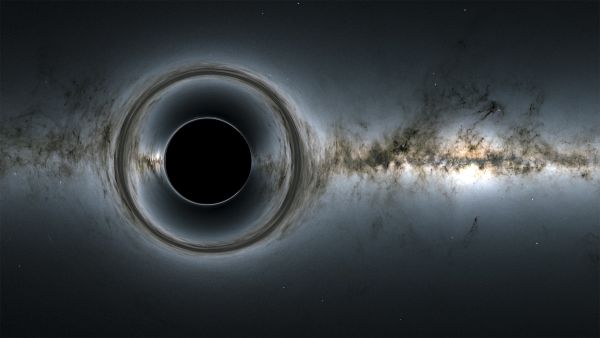When you purchase through link on our internet site , we may take in an affiliate commission . Here ’s how it work .
The end of theMilky Wayas we know it may amount a few billion class ahead of docket .
According to a new newspaper bring out Jan. 4 in thejournalMonthly Notices of the Royal Astronomical Society , our house galaxy appear to be on a wreck trend with one of its close satellites , the volute of stars known asthe declamatory Magellanic Cloud(LMC ) .

n this Hubble image, the Whirlpool Galaxy (M51a) and a companion (M51b) are merging. The two galaxies are similar in mass to the Milky Way and the Large Magellanic Cloud.
This cosmic crash , modeledin lovely and terrifying item by a squad of astrophysicist at Durham University in the U.K. , could begin as before long as 2 billion years from now — roughly 2 billion to 3 billion age sooner than thelong - anticipated collisionbetween theMilky Wayand its nearest cosmic neighbor , the Andromeda Galaxy . ( line up your doomsday clocks accordingly . )
While the LMC feature only about one - twentieth the solar people of the Milky Way , the hit would nevertheless leave permanent scar on both galaxies , igniting once - dormantblack muddle , flinging headliner quadrillion of miles out of orbit and defile the sky with crackling cosmic radiation syndrome .
" The demolition of the Large Magellanic Cloud , as it isdevoured by the Milky Way , will make for havoc with our coltsfoot , " Marius Cautun , lead study author and postdoctoral fellow in Durham University ’s Institute for Computational Cosmology , said in astatement .

When galaxies collide
Galactic collision are acommon occurrencein the surprisingly - crowded eternity of space , and scientist are getting pretty in force at modeling how sweet mergers might play out . Using a supercomputer collision simulator called EAGLE , the Durham team model several potential scenario for the imminent Milky Way / LMC merger .
What will exchange for our galax ? For fledgeling , the colliding LMC would likely rain cats and dogs loads of fresh gasoline and star into theblack hole at the center of the Milky Way , breathing fresh sprightliness into the once - kip giant . fit in to Cautun and colleagues , such a collision could bulk up the pitch-dark golf hole to about 8 times its current size , perhaps even twist it into aquasar — one of the brightest target in the universe , which takes place when a supermassive dim hole sucks in and spits out blazing heavenly matter at close - wakeful - speed .
Should this take place , the stars that currently call the Milky Way ’s galactic center home will , sadly , have to yield the neighborhood they know and love to a new population of cosmic emigrants from the LCM . According to the researchers , many stars will be breastfeed into the growing dark hole at the galactic center ; other whiz , reacting to all the special mass pouring into their neighborhood , could beflung headlonginto interstellar space , quadrillion of mile aside .

fortuitously for any descendants you might leave 2 billion years from now , only a few star populate the general region of Earth ’s sunshine will be dissemble by the merger , the generator wrote . The researchers foretell that any risk to life on Earth is " very unbelievable " — and , on the brighter side , the Milky Way ’s brand - new quasar could actually treat future Earthlings to " a spectacular video display of cosmic pyrotechnic , " according to study coauthor Carlos Frenk , director of the Institute for Computational Cosmology at Durham .
to begin with published onLive Science .
















